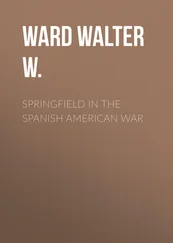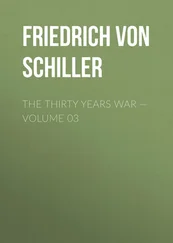Here lay a casus belli amply endorsed by international law, the practice of civilized powers, and the general opinion of the world. It was a ground, too, that Polk himself, as we have seen, felt entirely satisfied to stand upon, and one that our people, feeling as they did, would almost certainly have accepted. Having, then, apparently within his reach a pretext for war that almost everybody thought good, he would not have exerted himself to obtain one that almost everybody thought bad; and in fact—evidently expecting no event of decisive importance to occur near the Rio Grande—he went on day after day with his plan to lay our grievances before Congress, until news of the attack on Thornton burst upon Washington like a rocket. On the hypothesis that he had wished and meditated war from the first and merely stuck at appearances, his conduct was therefore irrational; and, besides, we have seen adequate reasons for believing that he desired peace.26
Discarding that hypothesis, however, leaves us the important question, How did the idea of sending Taylor forward present itself to Polk? First, then, from his point of view it seemed entirely permissible. A proprietor is not debarred from going where a squatter has built a cabin; and in the light of our official claim and arguments Mexican occupation above the Rio Grande was merely by sufferance. The so-called “provocative act” of pointing guns at Matamoros could not be charged against the government, for Marcy had suggested other points also for Taylor’s camp, leaving the choice to him. It was a defensive measure adopted by the General for military reasons in conjunction with pacific assurances and proposals; and we learn from Arista and others that it had a sedative effect on the property owners of that flimsily built city and on the army authorities.27
No encroachment upon the powers of Congress appeared to be involved. Had Polk’s aim been, as Calhoun alleged, to establish a boundary, he could not have tolerated Mexican posts, for the troops of foreign states cannot be permitted to sojourn within our officially defined limits. Besides, Polk had sent Slidell to treat on this very question, and Slidell had not given up the task. Though it rested with Congress to declare war, a President could legally, in the exercise of his discretion, take steps liable to bring about hostilities. Moreover Congress appeared to have authorized Taylor’s movement. Corpus Christi, claimed by Tamaulipas, had been made an American port of delivery. A collection district had been established in the intermediate region. The declaration of Polk’s Message, December, 1845, that our jurisdiction had been extended to the Rio Grande, and Marcy’s appended report, which announced that Taylor’s instructions were to regard that stream as our boundary, had raised no storm. For six months, admitted the chief Whig organ, our doings in this field not only had appeared to be endorsed by the people, but had gone on openly without calling forth “a single question from any public authority.” Officially notified of the military occupation of Corpus Christi, Congress, instead of protesting, had voted supplies for the troops. Finally, Congress had instructed the Executive, in the resolutions for annexing Texas, to reach an agreement with Mexico regarding the boundary; it was his duty to persevere in the attempt until convinced he could not succeed; and Taylor’s advance, as will presently be seen, appeared to him a proper step in the discharge of this obligation.28
Familiar precedents and principles were believed to sanction the movement of our troops. In 1794 Washington had ordered Wayne to conduct hostilities in disputed territory, and had threatened to destroy a British fort there. In accordance with a resolution of Congress, Madison had seized the “Florida parishes” claimed by Spain. Just before Taylor was ordered to move, Hilliard informed the House of Representatives that England had magistrates in the southern part of Oregon; and John Quincy Adams proposed to take military possession of that disputed territory before concluding negotiations. If such a method could be employed in dealing with countries willing to treat, very naturally—in the case of one that had pronounced for war—pacific occupation, leaving the competing jurisdiction undisturbed, seemed fully justifiable.29
Taylor’s advance appeared also to be highly expedient. For one thing, our claim upon the intermediate region would have been weakened, had we refrained from sharing with Mexico in the occupation of it. For another, it seemed wise to place ourselves in a strategic position that would be of great value, should Mexico’s threat of war be carried into effect. And for a third it was believed that a bold military attitude, indicating that at last the United States had made up its mind, would count with Mexico as a strong argument for negotiation. Such was the opinion of Parrott, Slidell, Worth, Taylor, Scott, Archer, now chairman of the Senate committee on foreign relations, Brantz Mayer, formerly secretary of legation at Mexico, Polk himself, the administration circle in general, and well-informed persons outside it. January 17 Conner was ordered to assemble all his vessels and exhibit them off Vera Cruz—evidently in pursuance of this design. The government organ stated, and opposition writers conceded, that such a purpose was in view.30
But essentially, as already has been suggested, Taylor’s advance rested on the necessity of military defence; and indeed there is reason to consider Scott the prime factor in the business, for the order of January 13 was based upon, and in part verbally reproduced, a “projet” submitted by him, whereas Polk’s diary for January 12 and 13 does not even allude to the subject. Now not only were defensive measures called for on general principles, as we have just been informed by the London Times, but the Texans actually and urgently needed a sheltering arm. During the latter part of 1845 the chief Mexican engineers drew detailed plans for crossing, not only the Rio Grande, but the Sabine. Merely the refusal of Paredes, growing out of his revolutionary designs, to reinforce the troops on the frontier with 2400 men prevented an attack at this time. Almonte, who had particularly recommended incursions into Texas, held the post of war minister in January, 1846. The Mexican troops were extremely mobile. Ampudia’s main force, at the end of a long march, did 180 miles in four days. Screened by rancheros and living on a little corn and jerked beef carried in their pouches, a body of light cavalry could have reached San Antonio by way of Laredo, ruined the town, and been well on their way toward home before their movement would have been suspected at Corpus Christi. The government received warnings of this danger from Dimond and from Parrott in 1845; Marcy and Polk feared it; and the probable rejection of Slidell—which meant a triumph of the war party—seemed likely to accentuate the peril. In fact Mejía ordered irregulars into Texas on February 16 and March 17, though, as their commander aspired to execute a revolution with American aid, he did us no harm.31
Nor were only such formal incursions to be guarded against. The war of 1836 in Texas had shown what outrages Mexicans were capable of committing, and similar affairs had now begun to occur. In one instance a party of fifteen, including women, after having been induced to surrender, were all butchered except a single person, who survived though seriously wounded. In April, 1846, the Mexicans opposite Matamoros confessed that bloodthirsty guerillas were abroad. Ampudia, whose murderous record had been his chief distinction, commanded there. May 13 the British consul in that city reported that licensed bands of assassins, “caressed, rewarded, and encouraged” by the authorities, were committing atrocities near the Rio Grande; and, had the way been open, such gangs might have robbed and murdered in the settlements of Texas.32
Читать дальше












